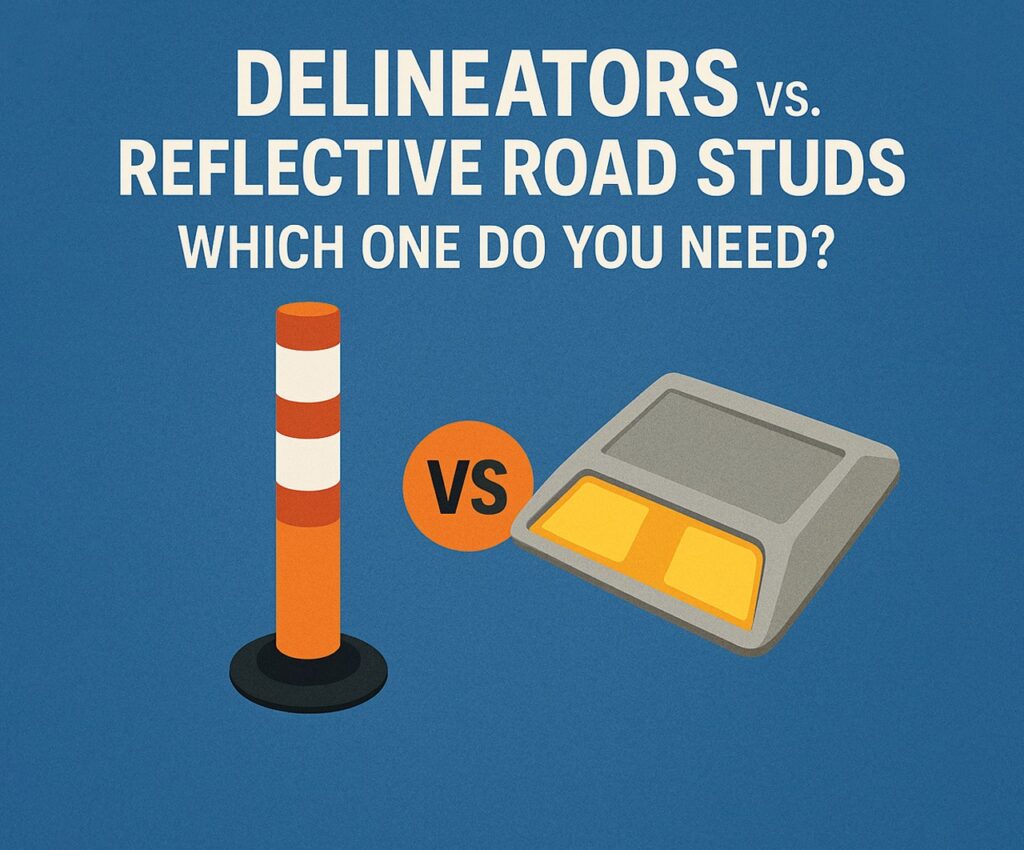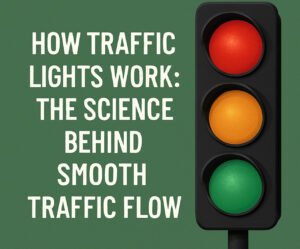When it comes to road safety, the choice between delineators and reflective road studs can make a significant impact. Whether you’re evaluating aluminium road studs price, exploring the benefits of amber road studs, or comparing technologies like astucia road studs, it’s important to understand the distinct functions of each tool. In this article, we break down the differences, advantages, and ideal applications of both solutions so you can make the best decision for your project. Know more..
What Are Delineators?
Delineators are upright posts or markers that visually guide drivers along roads, especially in areas where lane visibility might be compromised. Typically installed on the side of the road or along curves, delineators are designed to remain visible at night and during poor weather conditions.
They don’t just serve highways. You’ll also find delineators in urban zones, parking lots, and construction areas. They can be made from flexible plastics, steel, or composites, and often come with reflective tape or panels for enhanced visibility.
What Are Reflective Road Studs?
Reflective road studs, on the other hand, are embedded into or mounted on the road surface. Acting like miniature cat’s eyes, they reflect headlights back toward drivers, providing clear lane guidance in dark or foggy conditions. Road studs come in a variety of materials and colors, with specific uses assigned to each.
Popular models include amber road studs, used to indicate the central reservation on dual carriageways or motorway lanes. Premium variants like astucia road studs incorporate smart technology, while options such as aluminium road studs offer rugged durability in high-traffic zones. Understanding the aluminium road studs price helps budget-conscious planners make informed decisions.
Key Differences Between Delineators and Road Studs
The most obvious difference is the form: delineators are vertical, while road studs are horizontal. But the differences run deeper.
- Visibility Range: Delineators are visible from a greater distance, especially during daylight. Reflective road studs come into their own at night.
- Placement: Delineators are placed at the road’s edge or between lanes. Studs are embedded in the road itself.
- Durability: Delineators can be damaged by impact or weather. Aluminium road studs are extremely resilient and long-lasting.
- Technology Integration: Advanced options like astucia road studs include solar-powered LEDs or data sensors—technology rarely found in delineators.
Cost Comparison
If you’re on a tight budget, understanding the aluminium road studs price is crucial. While they might have a higher upfront cost than plastic or basic delineators, their lifespan and performance make them cost-effective long-term. Maintenance is minimal, and because they’re resistant to wear, replacement cycles are longer.
Delineators tend to be cheaper initially and easier to install, but they may need frequent replacement due to environmental exposure or impact damage. For high-traffic or critical zones, the higher durability of aluminium road studs offers better value.
Application Scenarios
Use Delineators When:
- Marking temporary construction zones
- Highlighting the edges of narrow roads
- Providing guidance on winding rural roads
- Budget is limited and installation needs to be quick
Use Reflective Road Studs When:
- Enhanced nighttime visibility is required
- Road marking must withstand harsh weather
- You want to incorporate smart features (e.g., astucia road studs)
- You’re marking high-speed or high-traffic routes
Advantages of Amber Road Studs
Amber road studs are a staple in many countries’ road safety protocols. Positioned between opposing lanes or at road medians, their color and reflectivity ensure drivers stay within their lane, especially in low-light conditions.
Benefits include:
- High visibility in fog, rain, or darkness
- Clear indication of boundaries and separations
- Durability even under high vehicle loads
Many municipalities favor amber road studs for their balance of cost and performance. They’re also compliant with most international road safety standards.
Why Consider Astucia Road Studs?
For those aiming to future-proof their infrastructure, astucia road studs are a smart investment. These high-tech studs go beyond reflection. Features include:
- LED Illumination: Lights activate as vehicles approach, improving visibility.
- Solar Power: No wiring needed, eco-friendly operation.
- Data Collection: Monitor traffic flow, speed, and environmental conditions.
- Adaptive Lighting: Adjusts brightness based on ambient conditions.
These features make astucia road studs ideal for tunnels, intersections, sharp curves, and accident-prone areas. Though the cost is higher, the added safety benefits and data capabilities offer immense value.
Environmental Considerations
When comparing delineators and road studs, think about environmental impact. Recyclable materials are available for both, but aluminium road studs score high on the sustainability chart due to their longevity and recyclability.
Astucia road studs with solar capability reduce power grid reliance. Meanwhile, many amber road studs now use environmentally friendly paints and adhesives.
If reducing environmental impact is a priority, this should factor into your decision-making process.
Installation and Maintenance
- Delineators: Typically easier to install. May be temporary or permanent. Require inspection and occasional replacement.
- Road Studs: Require precise installation, often with resin or mechanical fastening. Low maintenance, especially with aluminium road studs.
Some astucia road studs require additional setup due to solar charging and programming, but manufacturers often offer support packages.
Real-World Case Studies
- Urban Roads: Cities like London and Singapore have adopted astucia road studs at intersections to alert distracted drivers.
- Highways: German Autobahns and US interstates often use aluminium road studs in fog-prone areas.
- Construction Sites: Delineators dominate due to their ease of use and mobility.
By reviewing local road conditions and objectives, stakeholders can decide which solution fits best.
Final Verdict: Which One Do You Need?
There’s no one-size-fits-all answer. Both delineators and reflective road studs serve critical but distinct roles in traffic management. If you need flexible, visible, and easy-to-install guidance—especially in short-term or low-speed zones—go with delineators.
For long-term, high-performance visibility and ruggedness, particularly at night or in extreme weather, reflective road studs are the superior choice. When budget permits, investing in astucia road studs can provide both immediate safety benefits and long-term data insights.
And don’t forget to evaluate aluminium road studs price when making bulk purchases. Their long service life could offer better value than multiple rounds of replacements.
Conclusion
Whether you’re a city planner, civil engineer, or contractor, choosing the right road safety tools is about balancing performance, budget, and long-term impact. Both delineators and reflective studs—especially amber road studs, astucia road studs, and budget-sensitive aluminium road studs—play key roles.
Make your choice not just based on initial cost, but on the outcomes you want: improved safety, lower maintenance, and smarter traffic management. With the right strategy, you can make roads safer and smarter.





